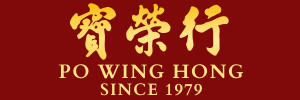
The Art of Poon Choi - Chinese Casserole
Poon Choi (盆菜), which is literally translated to “basin food”, is a large basin crowded with overflowing of ingredients assembled in a casserole. Premium ingredients are placed on top for a luxury presentation. The final product has a rich broth consistency, with the juices of the meats and seafood from the top layers fusing with the vegetables in lower layers.
As Poon choi is a one-pot dish portioned to be suitable for festivals and house party, it is usually served whenever there is celebrations like Chinese New Year as well as other major Chinese festivals. This cuisine also signifies affluence and prosperity in the coming year.
Origin
Poon Choi is a communal dish that is unique to Hong Kong, particularly in rural villages. Poon choi was invented during the late Song Dynasty (960-1279 AD). When the Mongol troops invaded China, the young Emperor fled to Hong Kong. To welcome the Emperor, the local villagers collected all their best food and cooked it. The poor village did not have enough serving containers, so they layered the food in large wooden washbasins. Nowadays, younger generations prefer a wider range of exquisite foods with a more sophisticated taste.
Composition of Poon Choi
Poon Choi has also reflected Hong Kong’s creativity in food culture. It is composed of 3 to 6 layers of 10 or more ingredients to cater to people’s taste buds.

Top layer : sea cucumber, abalone, dried scallop, fish maw, shiitake mushroom, black moss (fat choy), braised oysters, king prawn, meat balls, roasted meat and chicken. The most prized items are placed on top, usually prepared or braised beforehand.
Middle layer : braised pork, squid and pigskin. The braised pork belly is stewed for hours to become tender, juicy and tasty.
Lower layer : bean curd, daikon, lotus root, cabbage and taro. These ingredients are placed at the bottom to absorb the juices from the meat on top.
Symbolic Meanings
Sitting together as it symbolizes family reunion and a happy celebration. Each of the ingredients in the Poon Choi also have auspicious meanings:


Manner of Eating
Poon Choi should be eaten layer by layer, from the top to the bottom. Instead of first "stirring everything up", diners can taste the delicacies of the top layer. The remaining contents are kept warm with great option of abalone sauce over an open-fire (like hotpot) after serving. Attentive layering of the ingredients contributes to the taste of the whole dish.
Check out the links below for more product options:
CANNED ABALONE (Ready to use! The abalone sauce can be used in the pot too!)


